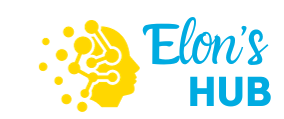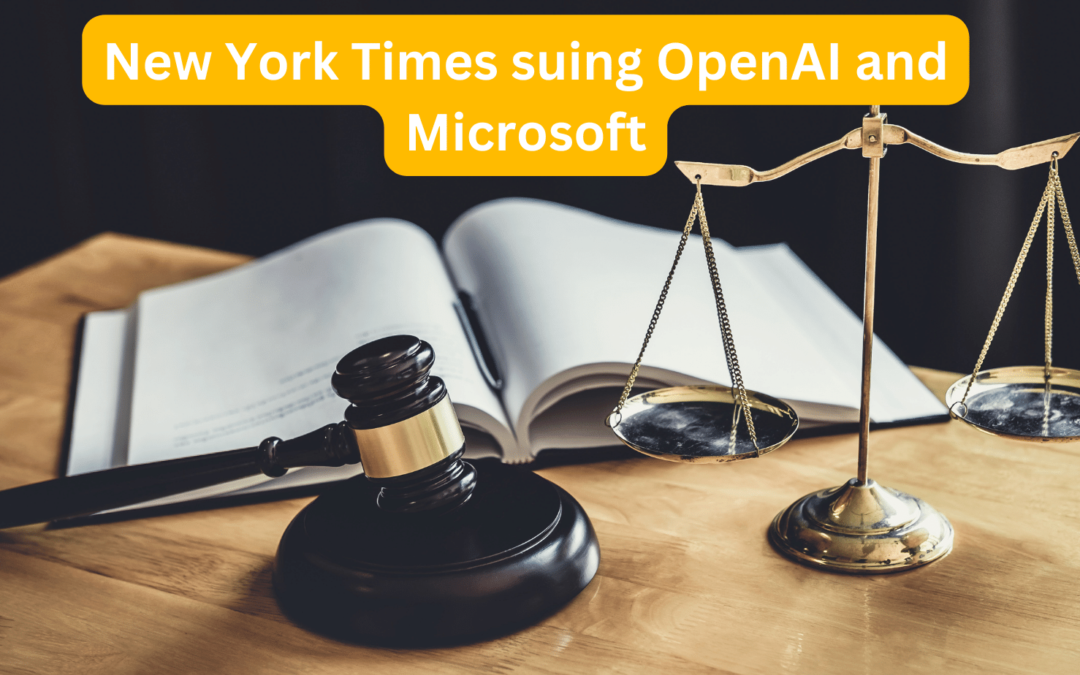Navigating the complexities of copyright laws and AI technology is a challenge that many of us face, not just the experts. Like you, I’ve wrestled with pinning down where legal lines in the sand are drawn amid our increasingly digital world.
As I delve into the nuances of a recent high-profile lawsuit involving The New York Times, OpenAI, and Microsoft, my goal is to bring some much-needed clarity to this contentious issue.
Together we’ll unravel the tangled threads of copyright infringement claims and illuminate how these discussions might influence our future engagements with AI technologies — because when we’re armed with knowledge, we’re empowered to navigate more confidently.
Stay tuned; things are about to get pretty intriguing!
Key Takeaways
- The New York Times is suing OpenAI and Microsoft for using their articles without permission to train AI.
- This lawsuit could change rules about how AI technology uses written content from others.
- AIs like GPT – 4 might have learned to write by studying lots of text, possibly including that from the Times.
- Big cases in the past, like Google vs. Oracle, have set examples for using someone else’s work under “fair use.”
- Protecting copyrights is important so creators keep making new things and get credit for their ideas.
The Times Sues OpenAI and Microsoft
In a landmark legal move, The New York Times has launched a lawsuit against OpenAI and Microsoft, accusing the tech giants of stepping beyond the bounds of fair play by allegedly infringing on copyright laws.
This groundbreaking case throws into question the intricate dance between innovation and intellectual property in the age of artificial intelligence.
Lawsuit filed for copyright infringement
I just heard the New York Times is taking big steps against OpenAI and Microsoft. They’ve filed a lawsuit over copyright infringement. The Times says these two tech giants used their articles to train artificial intelligence without permission.
That’s right, they’re claiming that bits of news stories and other written stuff from the newspaper were fed into AI models like ChatGPT.
This case is packed with serious claims. It’s all about how OpenAI’s technology might be using the work of journalists illegally. And it seems like a lot of money could be on the line too—possibly billions of dollars! Now, everyone’s watching closely since this fight could change things for people creating content out there.
Next up, let’s dive into what copyright infringement really means and why it matters here.
Allegations against OpenAI and Microsoft
The New York Times is taking OpenAI and Microsoft to court. They say these tech giants used their work without permission. The claim is about AI tools making new content from what they copied.
This means they might have taken articles, stories, and other stuff the Times made and let AI learn from it. If that’s true, it breaks copyright rules.
People are watching this case closely. It could change how AI companies use things others create. For example, chatbots or search engines might not get to learn from certain texts anymore if it’s not okay with the creators.
This lawsuit talks a lot about GPT-4, an AI model by OpenAI which was trained on loads of data including possibly some from the Times—without asking first or paying for it.
Explaining the Copyright Infringement
Diving into the heart of the controversy, we’ll unveil how the New York Times’ allegations suggest OpenAI and Microsoft may have overstepped legal boundaries — a contentious issue where creative output meets AI’s intricate web of algorithms.
It’s a tale where technology intertwines with artistic merit, setting the stage for a fierce debate on what constitutes fair play in our digital age.
Unlawful use of NYT’s work
The New York Times is angry because OpenAI might have used their articles without permission. They think this isn’t fair or legal. OpenAI makes smart programs that can write like humans, but to learn this skill, they need lots of text to study.
It seems the company took millions of words from the Times without asking.
This could be a big problem for everyone who makes things like books, movies, and music. If companies take these creations without paying, it’s harder for artists to make money from their hard work.
Next up, I’m going to tell you about how these AI tools are causing new troubles with copyrights.
Creation of AI models using copied material
They say some AI models have used things that people wrote without asking. Think about it—stories, news articles, and even what I’m typing right now could help an AI learn how to write.
It’s like teaching a parrot to talk by reading it books you didn’t write.
This has big companies worried. If AIs can read everything on the internet and then make their own stories, those big companies might not sell as many books or newspapers. They work hard to make cool stuff for us to enjoy, so they don’t want machines just copying it all without permission.
Impact of AI on Copyright Infringement
The incursion of artificial intelligence into the realm of content creation has sent shockwaves through the legal stratosphere—now, AI’s knack for mimicking human prose brings us to a crossroads where copyright law must be tested and possibly redefined.
This technological advance begs the question: Where do we draw the line between inspiration and infringement?.
AI’s ability to replicate human-like writing
AI now can write like us. It’s not perfect, but sometimes it’s hard to tell the difference between a human and a machine. OpenAI made a big AI that can make stories, answer questions, and even write poems.
This is exciting yet scary for people who make books, articles or any kind of writing for living.
Machines use what they’ve learned from reading lots of stuff on the internet to create new text. They get better every day at copying how we talk and share ideas. But this makes some wonder—who should own the words that AI puts together? It’s a hot topic with no easy answers yet.
Legal implications of AI technology
AI technology touches the law in new ways. It can write like a person and sometimes uses what others have made without asking. This brings up big questions, like who owns the stuff AI creates? If an AI takes someone’s writing to learn, is that fair or stealing?.
People who make things—writers, artists, musicians—are watching closely. Their work feeds their families. They depend on laws to keep their creations safe. But now AI is shaking things up, making everyone think hard about these rules again.
What counts as using something fairly? And when does it cross the line into taking what’s not yours? These are tough puzzles we all must solve together.
Previous Legal Battles with AI
The landscape of technology law is no stranger to skirmishes over innovation and intellectual property, with cases like the high-stakes showdown between Google and Oracle setting precedents in the realm of AI.
Such clashes throw into sharp relief the tension between advancing tech frontiers and safeguarding creators’ rights, a balance yet to be fully struck as we navigate these emergent digital territories.
Google and Oracle case
A big fight happened between Google and Oracle over computer code. Google used some code from Java, which Oracle owns, to make its Android system for phones. Oracle did not like that.
They said Google stole their stuff without asking. So they went to court.
Courts looked at this for many years. In the end, they said it was okay for Google to use the Java bits because that’s called “fair use.” It means you can take a small part of someone else’s work if you are making something new or different with it and not just copying it.
This fight taught people a lot about how copyright laws work with new tech like AI.
Fair use of copyrighted material
Sometimes people can use stuff that someone else made without getting in trouble. This is called “fair use.” It lets us share small bits of music, books, or movies for things like teaching or making news reports.
But there’s a catch – we must be careful how much we take and what we do with it. We can’t just copy everything and make money off it.
Using a little piece of something doesn’t hurt the person who first made it; that’s fair game under the law. But when companies grab whole chunks without asking, they could end up facing a lawsuit.
That’s why this battle with New York Times, OpenAI, and Microsoft is such a big deal. They’re trying to figure out if AI copying articles goes too far and breaks the rules of fair use.
The Importance of Protecting Copyrights
In the ever-evolving arena of content creation, where generative AI tools like OpenAI’s GPT-3 are reshaping how we conceptualize originality, the sanctity of copyright becomes a cornerstone for discussion.
It’s not just about safeguarding revenue models; it’s an existential battle to preserve the unique voice and hard-won integrity that fuels the passion and livelihoods of artists and journalists alike.
Impact on media companies and creativity
Media companies rely a lot on the stuff they make, like news articles and stories. When someone takes their work without asking, it’s not fair to them. They lose money from ads and people who pay to read or watch their stuff.
Also, when media companies don’t get paid for their work, they might not want to make new things anymore.
Creativity is really important in the world of media. But if AI can copy what someone else made, making something truly new gets harder. People might see less cool and different ideas out there because it could seem easier just to let an AI do all the creating instead of thinking up fresh stuff themselves.
Protecting intellectual property rights
It’s clear that the rise of AI challenges how we think about creativity and content creation. Ideas, stories, and innovations from minds like those at The New York Times are valuable.
They deserve to be safe from illegal use. This isn’t just about keeping big companies in check; it’s for all creators out there – whether they’re writers at major newspapers or artists sharing their work online.
Keeping intellectual property rights safe is crucial. If people can just copy others’ hard work without permission, why would anyone want to create new things? That risk could hurt everyone who enjoys reading articles or looking at art.
We need rules that make sure creators get credit for what they do and stop others from using their stuff without saying okay first. It’s not fair when someone else makes money off your ideas, so protecting these rights helps everyone stay honest and keeps creativity alive.
Conclusion
Let’s end with this. The New York Times is standing up for its rights. They’re taking on two tech giants because they say their work was used without permission. This fight could change how AI and creativity live together.
We all should watch what happens next.




